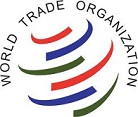
The contribution of trade to the economy of a country is beyond any doubts. The positive contribution of trade to the economy of a country is done through creation of new jobs, encouraging entrepreneurial activities, and bringing new skills, knowledge and competencies into the country. Founded in 1995 World Trade Organisation (WTO) deals with the rules of trade between nations at a global or near-global level by providing a negotiating forum and helping to settle disputes. Until its formation in 1995, some of the main function of WTO including formulating the rules of international trade was performed by the General Agreement on Tariffs and Trade (GATT) since 1948 (Peng, 2009). Scope of the WTO In order to analyse at what extent WTO is contributing to the facilitation of the international trade it is necessary to establish the scope of the organisation. Currently WTO has 153 members and 30 observers, most of whom are striving to be members (Members and Observers, online 2011). Moreover, the amount of trade engaged in by WTO members account for over 97 percent of the total world trade (The Organisation, online, 2011). WTO Contribution to International Trade WTO positively contributes to international trade in many ways. However, the contribution of WTO to the facilitation of international trade can be seen by the principles that the organisation has adopted. Specifically the main Principles of WTO can be summarised in the following points: A) Trade without discrimination. WTO does not allow trade discrimination among its members. If any WTO member wishes to grant advantages to any of their partners within WTO like lower taxes for their products, all other WTO members should be granted such an advantage as well. This particular principle is also referred to as the most-favourite-nation (MFN) treatment as well. The adherence…
By John Dudovskiy
Category: International Business

The role of Internet in personal and professional lives of people has increased dramatically during the last decade and today people use Internet for many different purposes including education, shopping, communication, working, entertainment etc. Social Networking Sites have emerged as a platform for displaying individual profiles, sharing information, photos, videos, experiences among Internet users as well as forming friendships and sending messages to each-other. Having started as a display for personal achievements for members only several years ago Social Networking Sites have quickly developed and have taken new roles such as being an effective advertising tool and even a platform for political propaganda. For instance according to Esfandiari (online, 2010) political unrest in Iran following 2009 elections was partially fuelled by Facebook which resulted in government announcing Social Networking Sites as ‘hidden enemies’ of the country. Social Networking Sites have mushroomed during the last few years and today there are many global Social Networking Sites as well as sites targeting specific countries, members of specific groups and people of specific professions. However, not all Social Networking Sites are equally successful and the numbers of their members vary between several hundred and several hundred millions. The number of Social Networking Sites members depend on many factors including financing and member attraction and retention strategies each Social Networking Sites employ. The definition of Social Networking Sites are given by Hutchinson (2008) as taken by Boyd and Ellison (2007) as “web sites that allow members to construct a public or semi-public profile and formally articulate their relationship to other users in a way that is visible to anyone who can access their file” (Hutchinson, 2008, p.201). As Fellow (2010) informs initial Social Networking Sites have began appearing towards the end of 1990s with Classmates.com and SixDegrees.com where Classmates.com was assisting people with finding their former classmates, whereas the aim of SixDegrees.com was…
By John Dudovskiy
Category: E-Commerce

The VARK Questionnaire has been taken by me as a part of self-estimation process. According to Warner and DeSimone (2009), the implementation of VARK questionnaires should not be limited to educational establishments only, and workplaces should be using them as well when devising training and development programs for their employees. VARK questionnaire reveled my study strategies to be mainly kinesthetic and read/write. This result does not only reveal my study strategy, it also reveals some traits of my personality, and therefore the results are directly connected to the level of my employability. My kinesthetic and read/write study strategies positively contribute to the level of my employability due to the following reasons: Firstly, kinesthetic learners are ‘hands-on learners’ or ‘doers’ and it means that in the workplace they require minimum induction and training, therefore saving significant amount of financial resources of the organisation. Secondly, kinesthetic learners like to experiment, and this particular trait is considered to be valuable by a range of global companies like Apple and Google who encourage their employees to experiment because it leads new product development, innovational ideas and procedures. Being a kinesthetic learner experimenting is my habit as well so I can target above named global brands for my future employment. Thirdly, employers are attracted to read/write learners, due to the fact that most of the knowledge in companies in many industries is stored in a text format with which read/write learners are comfortable. I am efficient with getting knowledge through reading, and as such in a good position to secure my employment in a position of my dream. Fourthly, most of the positions in many organisations in many sectors include increased amount of writing in forms of preparing reports, writing articles and notes. And because I am comfortable with writing such kind of reports as…
By John Dudovskiy
Category: Personal reflection & development

Belbin’s Team Roles. The need for team oriented approach has developed in the recent few decades due to the fact that well organized teams are usually very high performers. Johnson et al (2008) state that for the team to be successful it can not consist of all leaders or all analytical people, but there should be harmony and right mix in order to have a successful team in place that can carry out and perform all sorts of tasks. Bloise (2007) also supports this statement and mentions that it is the job and responsibility of the senior management in the organization to ensure that they select and recruit right candidates with right levels of competencies and skills in order to fill the gap to make successful team. The idea of bringing together candidates with different backgrounds and core competencies in order to make a successful team was initially proposed by Meredith Belbin who stated that successful teams are consisted of a mix of individuals each of whom can perform a different role in the team (Hall, 2007). The Belbin’s team role also indicates that a right balance within the team where each individual will contribute their share with their specific role is very crucial. The Belbin’s Team Roles consist of nine types of roles that exist within a successful team. Even though all nine types of individuals are different from each in terms of contribution they make towards the objectives of the task, the team is expected to be high-performing. Here are the following types of team roles according to Belbin’s team roles: Coordinator in Belbin’s Team Roles The co-ordinator is a person who is considered to be a chairperson in the team who has special leadership skills. Hall et al (2007) state that co-ordinator in the Belbon’s team roles is…

Learning gained and contribution to analytical and behavioural skills I found this module informative and motivating and I believe that my knowledge and skills have increased after I attended it and done my assignment. My knowledge of marketing has been significantly expanded as a result of attending classes, to include global approach to the marketing issues. In fact, I found out that the practice of marketing for businesses has become much more complicated due to the influence of globalisation to it. I updated my knowledge in such areas of international marketing as the impact of global factors to company management decision-making, strategies of choosing and entering new markets, developing new products for international markets, the characteristics of marketing research for international markets, international marketing mix elements etc. Our group was able to find during international marketing classes that the rules of games have changed in the business world in many aspects because of opportunities and threats globalisation presents. I understood that global marketplace has become much more competitive due to the increasing forces of globalisation, technological advancements, and the increasing role of Internet in professional and private lives of people. And all of this have affected the ways decisions are taken in companies, including decisions taken by marketing executives. I started to appreciate the importance of developing global mindset for modern marketing executives as a result of becoming closely familiar with the differences of marketing in it’s traditional meaning, and international marketing. The main differences turned out to be the increasing number of factors modern markers need to take into account the speed of decision-making and requirement for modern marketing executives to be more creative. The importance of creativeness and “thinking out of box” was especially highlighted during the classes as one of the necessary attributes of modern marketers. The valuable…
By John Dudovskiy
Category: Personal reflection & development

Scott and Wang (2006) state that there are several sources of finance available for SMEs in China. However, types of finance that are both available and obtainable differ for SMEs in different life cycle of the enterprises. They mentioned the following sources of finance available for SMEs in China: 1. Personal savings This form of financing is usually preferred if it is available as it does not require any interest payments in a fixed nature. Therefore, due to difficulties in finding and obtaining loan at the start-up stage, most owners of the small enterprises usually invest their own savings. 2. Loan from immediate friends and relatives This is another source of finance for SMEs in China as majority SMEs are organized and opened with the help of this type of financing. Due to strong family culture in China, the access to this type of financing is easier than it can be found in EU or theUS. 3. Trade credits Zhuo (2001) stated that trade credits is one of the financing sources for SMEs in China as it gives them the privilege of paying back to their suppliers later. This is also considered to be a good form of financing methods as small and medium sized enterprises usually struggle with cash at the early stage of their business operations. However, getting a trade credit also requires SMEs to provide healthy and strong cash flow statements, where in many cases it is impossible. 4. Bank loans Banks loans are crucial sources if financing any business in most countries due to the length and lower interest rates than the equity. However, obtaining a bank loan is another obstacle in financing SMEs in China. This is due to the fact that most of the banks are state-owned commercial banks that…
By John Dudovskiy
Category: Finance

The capital structure model was promoted by Modigliani and Miller (also known as MM) (1958) which indicated that the value of the company is unchanged by the alternative mix of capital structure, namely the structure of the capital is irrelevant to the value of the firm assuming that no tax and all profit are apportioned as dividends. However, Gray et al (2007) stated that such a perfect capital market does not exist in real life. Jensen and Meckling’s (1976) (cited in Gregory et al, 2005) agency theory provides insight into the financial management of capital structure where it states that a contract is made where a principal (owner) hires and agent (directors) to run the company on their behalf by delegating the responsibilities and pays them for it. However, in the case of SMEs, majority directors of the businesses are owners of them too. Cassar and Holmes (2003) mentioned about the pecking order model by (Myers, 1984), which suggests that firms have a particular preference order to finance their businesses. He indicated that due to the information asymmetry between the firm and the potential investors, the agents (managers) know more about the firm, its potential value and future prospects than the new investors. Therefore, managers know what form of financing is available to the business at any given stage. From this point of view managers usually try to obtain the financing that they think is obtainable for them. This sometimes leads to a situation where managers have not tried other available sources of financing as they assumed that the source of finance they obtained has been the best and only choice for them. Many researchers have researched the capital structure decision form the perspectives of small firms (Gregory et al, 2005, Cassar and Holmes, 2003, Coleman, 1998, Berger and Udell,…
By John Dudovskiy
Category: Finance

Employee rewards can be divided into two categories: tangible and intangible. Tangible employee rewards include financial incentives, presents, holidays, various perks etc. According to Woods (2009) intangible rewards include the following points: i) Communication between management and employees. Management should ensure the intensive level of communication with the workforce discussing with them the various aspects of the business. Moreover, engaging employees in decision making processes will positively contribute to the level of their job-satisfaction and will increase their loyalty. ii) Opportunities for career development. Some of the highly qualified professionals value the opportunity for personal and professional growth, and display willingness to join a company where such opportunities exist, even if the payment package is not so competitive. This fact should not be ignored by management, and accordingly opportunities for personal and professional growth should be provided for employees that would be highly beneficial for both, employees, as well as the company. iii) Assisting with employee work/life balance. Management should assist its employees with maintaining their work and life balance by providing opportunities of job sharing, working from home etc so, and in this way the company can dramatically increase its value in view of a potential job applicant. iv) Recognition of employee contribution. Each single occasion of positive employee contribution should be recognised by management by sending appreciation letters, verbal appreciation, and announcement and through other means. v) Providing coaching at work. Some potential applicants hesitate to apply for a vacancy because they would not feel confident if they could do the job. The management should organise coaching for each new employee joining the company, so that people with necessary qualifications would feel confident to apply for a position with the company. Moreover, according to Price (2004), as taken from Naidoo and Wills (2000) promoting health and safety in the workplace companies…
By John Dudovskiy
Category: HRM

Banking profitability. Ramlall (2009, p.2) divides the determinant factors of banking profitability into two groups: 1. External factors. They can be divided into further two categories: macroeconomic environment and market/industry characteristics. 2. Internal factors that is characteristics which are bank-specific. Dividing banking profitability in such groups is an efficient way of studying the issue, because it differentiates the factors affecting it according to its characteristics. According to Anthanasoglu (2005) studies dealing with internal profitability determinants employ such variables as size, capital, risk management and expenses management. However, the authors fail to mention external profitability determinants in greater details as compared to the internal factors, despite the fact that external factors are important as well. 1. Mergers as a Measure to Increase Banking Profitability A study undertaken by Akhvein et al (1997) was focused on examining the efficiency and price effects of mergers by the use of frontier profit function. The result of their study indicated that merged banks enjoyed an average of 16 per cent increase on profit efficiency compared to other banks due to the range of factors including shifting outputs from securities to loans and improvements on higher value product range. While examining the effect on banking profitability and rate of return on capital on changes in interest rates, Hancock (1985), made three assumptions: 1. Banking profitability depend on interest rates for asset and liability items, which is not the same for one market interest rate. 2. Banking profitability depend on the user costs of all financial items, and user costs depend on service charges, service premium costs and deposit insurance premiums, as well as on interest rates. 3. The relative price changes between financial and non-financial items is taken into account. Berg et al. (1993) concluded Swedish banks being generally more efficient than Norwegian and Finnish banks. 2.…
By John Dudovskiy
Category: Finance

Banking profitability. One of the fundamental functions of any bank is its profitability. There is no doubt that recent global financial crisis negatively affected on the profitability of many banks around the globe. Some of them are starting to recover due to efficient measures from bank management and help from their governments. However, many European banks are still struggling to regain strong position in marketplace which they used to hold only a few years ago. And many of them are still not too far from the verge of bankruptcy. The problem of assessing the profit efficiency of banking industry is of paramount importance for local governments and economic theorists. Therefore, the important point is if government is striving to assist for the performance of banks to be improved, it is crucial to know how far a bank is able to increase its profit by increasing its efficiency, not using new resources for the purpose. The study on profitability of banks is especially important at this point of time. As in summer of 2012, the lowest point of global economic crises is past; however the banks and financial system in many countries and in many industries are still vulnerable to various shocks. The main important point is that problems within banking system are going to affect all other businesses as well. Because businesses have a close relationship with banks and most of them are financed by banks. This fact makes it necessary to study all the causes of the recent economic crisis in detail, giving extra attention to its affect to banks and to work on making banks less vulnerable to such external shocks. Studies into banking profitability Kumbhakar and KnoxLovell (2000, p.8) inform that Christensen, Jorgensen and Lau were the first researchers to estimate a flexible profit function in…
By John Dudovskiy
Category: Finance
